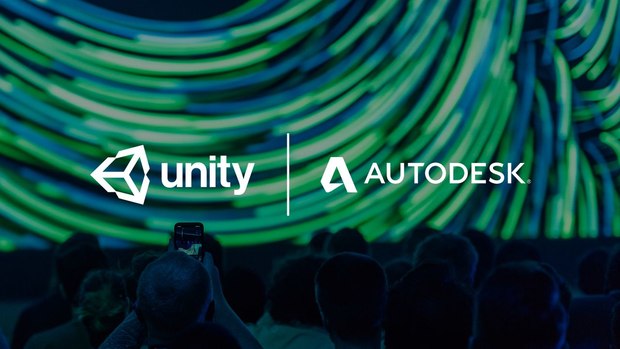Companies working to release tools that ensure full data interoperability between key products by fall of next year.
LAS VEGAS -- Unity Technologies, makers of the world’s most widely used real-time 3D development platform, has announced the next phase of their strategic collaboration with Autodesk, the leader in 3D design, engineering and entertainment software: ensuring full data interoperability between many Autodesk products and Unity. The goal is to enable designers, engineers, construction and creative professionals to focus more on delivering projects and productions and less on translating data and making tools work together. Market focus includes customers working in architecture, engineering and construction (AEC), automotive, and media and entertainment (M&E), across multiple products including Revit, VRED, 3ds Max, Maya, and Shotgun. First integrations stemming from the collaboration will launch fall 2019.
According to Andrew Anagnost, Autodesk president and CEO, “Our collaboration with Unity will help our customers make better decisions for making everything from buildings and cars, to training and entertainment. By leveraging their design data, and the massive ecosystem of Unity developers, our customers will be able to rapidly create virtual experiences that help them work better and do more.”
Unity enables users of Autodesk’s 3D authoring tools the ability to unleash their 3D information in the virtual and real worlds, allowing customers to unlock their full creative potential for projects in 25+ platforms like iOS, Android, Oculus, HoloLens, PlayStation 4, Xbox One and more. As the link between these tools grows stronger, customers will be able to reduce work cycles and make it easier to create real-time virtual and real-world experiences.
“Every job is a custom job that demands a unique approach to solve unique challenges,” Unity Technologies CEO John Riccitiello commented. “Together with Autodesk, we are streamlining the ways our tools work so that you can do your job the right way, the first time, as efficiently as possible. Customers will be able to see everything in context, in real-time, in fall 2019, so they can identify mistakes, drive consensus and visualize the project before the first yard of concrete is poured.”
Unity and Autodesk Revit: enhanced interoperability to help designers, engineers save time and money in design visualization workflows
Integration between Unity and Revit helps users know they are using the right BIM model, optimized for downstream interactive 3D, to create high-fidelity Unity applications such as interactive architectural walkthroughs or collaborative AR construction solutions. This enhanced interoperability will power a more streamlined workflow for architects and construction companies; importing BIM data visualizations directly from Revit into their Unity projects will dramatically simplify creative iteration while keeping costs down.
Unity and Autodesk VRED: reduced time-to-market and more performant, reliable products for Automotive
This integration will enable designers and engineers to easily reuse hi-fidelity VRED data (including environments, lighting, materials, and animations) directly inside Unity to quickly develop interactive, real-time applications (such as car configurators, virtual showrooms, and training applications) and run them on 25+ platforms including PC, AR/VR, and mobile.
Unity and Autodesk Shotgun: increased productivity in the world of Media and Entertainment
Unity and Autodesk are working on an integrated solution to make it easier for teams working in film and television to manage multiple asset types. Artists will no longer have to worry about managing files; they’ll be free to focus on their creative work. Animators and modelers will be able to work in the context of a sequence and get real-time feedback on changes in lighting, camera location, or asset selection. Tracking the resulting analytics will provide supervisors with a more accurate evaluation of artist management.
Unity exists to democratize development, solve hard problems and enable success -- three core values that are the driving forces of Unity’s adoption by millions of customers. Games and experiences made with Unity have reached more than 3 billion devices worldwide this year and were installed more than 28 billion times in the last 12 months. For more information, please visit the Unity and Autodesk partnership page.
Source: Unity Technologies









